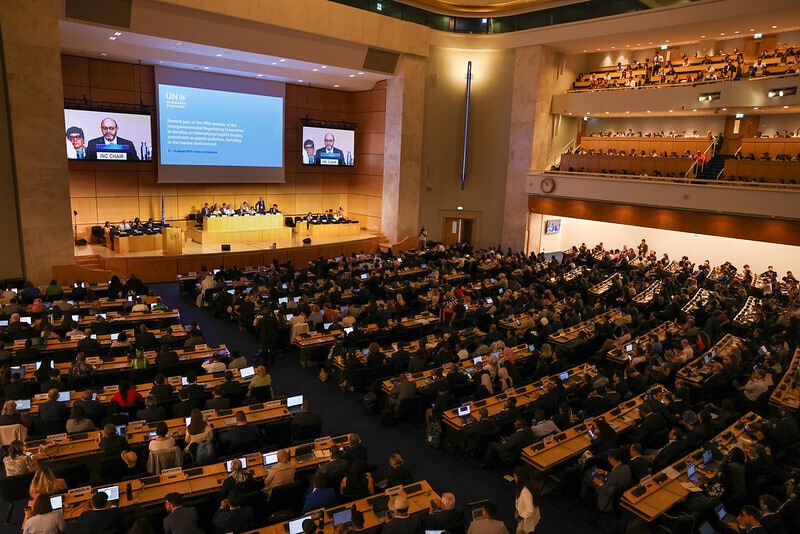'BioSolar Leaves' are better at cleaning the air than trees, say the technology’s developers
The man-made structures are teeming with microscopic plant life that pull pollution from the air.
Image: REUTERS/Dominic Ebenbichler
Stay up to date:
Biotechnology
At first glance they might look like bright green solar panels. But instead of generating electricity, these structures are teeming with microscopic plant life that can purify the surrounding air and produce nutritious ingredients for food.
Scientists are cultivating the bio-organisms on a panelling system that can be installed on buildings or land, much like solar panels.
How does it work?
Like other photosynthetic organisms, the plants cultivated in the panels, such as microalgae, diatoms and phytoplankton, use energy from sunlight, water and carbon dioxide to make the food they need to live and grow. In the process of photosynthesis, they release oxygen into the air.
The technology’s developer, British start-up Arborea, claims that biosolar leaves grown on panels taking up the surface area of a single tree can clean the air at the same rate as 100 trees.
They also produce organic biomass which can be made into ingredients for sustainable, plant-based food products.
Arborea is partnering with Imperial College London to test its BioSolar Leaf cultivation system outdoors as part of the university’s commitment to offset the environmental impact of its new campus in west London.
Founder Julian Melchiorri, who is an Imperial alumnus, says the project will be a chance to pilot the “dual action” technology in real-world conditions and understand its full potential.
“When I founded Arborea my goal was to tackle climate change while addressing the critical issues related to the food system,” he says. “This pilot plant will produce sustainable healthy food additives while purifying the air, producing oxygen and removing carbon dioxide from the surrounding environment.”
Food of the future
Like Melchiorri, researchers studying microalgae cultivation believe it might offer a sustainable solution to the problem of how to feed a growing global population.
The global food system is threatening the environment, and by 2050 there will be nearly 10 billion people to feed – about 3 billion more than in 2010.
This expanded population will demand 70% more food than is consumed today, according to the World Economic Forum’s System Initiative on Shaping the Future of Food. To meet this challenge, the initiative is looking at ways to transform our current food system while protecting human and planetary health.
Microalgae is being touted as a food of the future: it grows quickly and uses only a fraction of the land and water required for crops and livestock.
Edible algae, such as seaweed, has been a staple in countries like China, Japan and Korea for centuries. However, various microalgae species are rapidly gaining traction around the world as an alternative source of protein, antioxidants and other nutrients.
Better-known microalgae like spirulina and chlorella can be found in nutritional supplements, snack bars, pasta, ice-cream, smoothies, bread, cakes and more.
Don't miss any update on this topic
Create a free account and access your personalized content collection with our latest publications and analyses.
License and Republishing
World Economic Forum articles may be republished in accordance with the Creative Commons Attribution-NonCommercial-NoDerivatives 4.0 International Public License, and in accordance with our Terms of Use.
The views expressed in this article are those of the author alone and not the World Economic Forum.
Related topics:
Forum Stories newsletter
Bringing you weekly curated insights and analysis on the global issues that matter.
More on Nature and BiodiversitySee all
Tom Crowfoot
August 20, 2025
Chavalit Frederick Tsao
August 19, 2025
Andrea Willige
August 15, 2025
Tom Crowfoot
August 14, 2025
James Balzer
August 14, 2025





